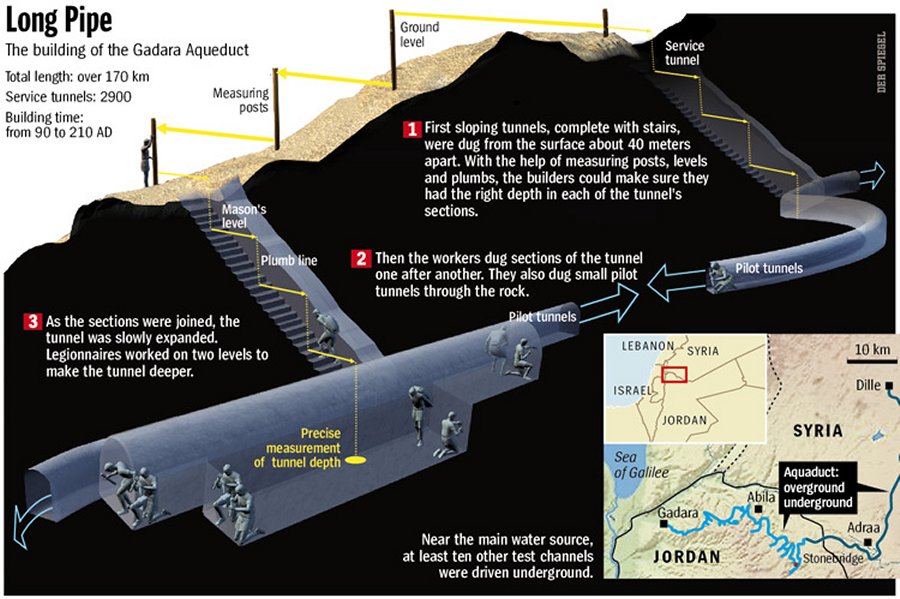Qanat Firaun -‘Canal Of The Pharaohs’ Is The Ancient World’s Longest Underground Tunnel
A. Sutherland - AncientPages.com - This underground tunnel known as Qanat Firaun ('Canal Of The Pharaohs') or simply 'Pharaoh's Watercourse' is an extraordinary example of the remarkable ingenuity of ancient Roman engineers.
Who knows, the structure may have several entrances, and perhaps one leads to the hidden labyrinth.
Flooded tunnel section of the Qanat Firaun. Image credit: Pafnutius - CC BY-SA 3.0
It is the world's longest underground tunnel, more than 100 kilometers. It was made of stone and built to connect water to cities in the ancient province of Syria. The monumental effort took more than a century, says the German researcher Mathias Döring, a hydromechanics professor in Darmstadt, Germany, who discovered it.
This aqueduct dates back to the Seleucid Era (312 BC–63 BC) and, mainly, the Roman time during the Decapolis. At that time, this city network, located in today's Syria, Jordan, and Israel, connected major and historical cities.
The aqueduct carried water for the Decapolis, improving the region's development and wealth. It was also renovated over centuries to continue its use. The derelict Decapolis aqueduct was rebuilt by the fall of the city network, causing several earthquakes of enormous extensions.
The Romans loved wasting massive amounts of water, which gurgled and bubbled throughout their cities. The engineers of the empire invented standardized lead pipes, aqueducts as high as fortresses, and water mains with 15 bars (217 pounds per square inch) of pressure.
Slant view of the antique city of Gadara, west of the present city of Umm Qais on a ridge. he red line depicts the aqueduct approaching the city from the East. In the background, Lake Tiberias, the Golan Heights and Mt. Hebron. Note pronounced erosion due to the lowering of the Dead Sea Rit. (Google Earth view from South, elevation 3x exaggerated). Image courtesy: ResearchGate
There were thousands of fountains, drinking troughs, and thermal baths in the capital alone. Wealthy senators refreshed themselves in private pools and decorated their gardens with cooling grottos.
The result was a record daily consumption of over 500 liters of water per capita (Germans today use around 125 liters).
However, when the Roman legions marched into the barren region of Palestine shortly before the birth of Christ, they had to forgo the usual splashing about, at least temporarily. It was simply too dry.
But that didn't stop the empire's clever engineers. They soon figured out a way to put things right. Researchers are currently studying a sensational canal system in the former Roman province of Syria (located in modern-day Jordan). It extends primarily underground over 106 kilometers (66 miles).
The tunnel was discovered by Mathias Döring, a hydromechanics professor in Darmstadt, Germany. Treading on moss-covered steps, he squeezes his way into dark caverns plastered with waterproof mortar. Greek letters are emblazoned on the walls, and bats dart through the air. "Sometimes we have to stop working -- there isn't enough oxygen," says the project director.
How the aqueduct worked. Credits: Der Spiegel
Qanat Firaun, "Canal of the Pharaohs," is what the locals call the weathered old pipeline. Based on rumors, gold is hidden in underground passageways that run up to 80 meters (262 feet) below the surface. However, the researcher found a better explanation.
It turns out the aqueduct is of Roman origin. It begins in an ancient Syrian swamp, which has long since dried out, and extends for 64 kilometers on the surface, and then it disappears into three tunnels, with lengths of 1, 11, and 94 kilometers. The longest previously known underground water channel of the antique world -- in Bologna -- is only 19 kilometers long.
In the limestone rock of the Acropolis Hill, on which the late Ottoman village stands, two tunnels for the water supply were excavated in ancient times. Still, the upper one can only be visited on a guided tour.
The last section, 170 km long, was built mostly underground, and the aqueduct was constructed between 90 and 210 AD during Roman times. The goal of the builders was to satisfy the enormously increasing water needs of the Decapolis towns of Abila (at Wadi Queilebh in Jordan), Adra'a (Adraha (known today as Dera'a in Syria), and Gadara (modern-day Umm Qais in Jordan), a city with a population of approximately 50,000.
It is worth mentioning that there are specific claims behind the classical city of Adraha, saying that there was an underground city, also part of the aqueduct. The city's inhabitants collected water in jars on ropes from the underground channel. It was, however, a long time ago, and no sign of the "underground city" was mentioned by Johann G. Wetzstein (1815 - 1905).
Qanat Firaun, "Canal of the Pharaohs," is what the locals call it. Image source
The tunnel system, later known as Qanat Fir'aun (Arabic: canal of the Pharaoh) and, by far, the longest-built structure of antiquity, is one of the most important engineering achievements of that era. The 380 m-long upper tunnel in Gadara was never completed, but the traces of work are visible, and one can learn and understand how the Qanat Fir'aun was carved out of the rock. Also, some entrance shafts for the construction and scoop holes of older cisterns, which the tunnel crosses, are still well preserved.
This unique construction is believed to be the work of legionnaires. The soldiers chiseled over 600,000 cubic meters of stone from the ground -- or the equivalent of one-quarter of the Great Pyramid of Cheops.
Researchers documented the 100-kilometer-long aqueduct tunnel in northern Jordan. In their paper, they wrote that "levels revealed that all tunnel sections lay at the same height. They had been built using the same construction method and appeared to belong together, thus indicating a unified and supra-regional plan. Given that Antique cities, which could have used such a water supply, were absent in the surrounding area, plus the fact that the origin of the tunnel had not been located, its interpretation as a long-distance pipeline seemed reasonable.
This colossal waterworks project supplied the great cities of the "Decapolis" -- a league initially consisting of 10 ancient communities -- with spring water. The aqueduct ended in Gadara, which is a famous place. According to the Bible, this is where Jesus exorcised demons and chased them into a herd of pigs.
The structure may have several entrances, and perhaps one of them leads to the hidden labyrinth.
Written by – A. Sutherland - AncientPages.com Senior Staff Writer
Updated on November 6, 2022
Copyright © AncientPages.com All rights reserved. This material may not be published, broadcast, rewritten or redistributed in whole or part without the express written permission of AncientPages.com
Expand for referencesMore From Ancient Pages
-
 Arborglyphs – Basque Immigrant Sheepherders Left Their Marks On Aspen Trees In The American West
Featured Stories | Jul 15, 2024
Arborglyphs – Basque Immigrant Sheepherders Left Their Marks On Aspen Trees In The American West
Featured Stories | Jul 15, 2024 -
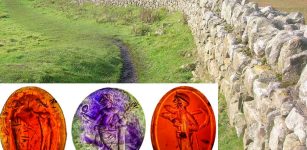 Amazing 2,000-Year-Old Engraved Roman Gems Discovered Near Hadrian’s Wall
Archaeology | Jan 30, 2023
Amazing 2,000-Year-Old Engraved Roman Gems Discovered Near Hadrian’s Wall
Archaeology | Jan 30, 2023 -
 On This Day In History: Statue Of Venus de Milo Is Discovered On The Aegean Island Of Milos – On Apr 8, 1820
News | Apr 8, 2016
On This Day In History: Statue Of Venus de Milo Is Discovered On The Aegean Island Of Milos – On Apr 8, 1820
News | Apr 8, 2016 -
 On This Day In History: National Hero Paul Revere Warns Of The British Coming – On Apr 18, 1775
News | Apr 18, 2016
On This Day In History: National Hero Paul Revere Warns Of The British Coming – On Apr 18, 1775
News | Apr 18, 2016 -
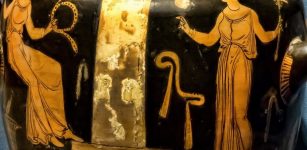 Apulian Secrets: Ancient Burial Rituals Shed Light On A Culture That Left No Written History
Archaeology | Jan 12, 2016
Apulian Secrets: Ancient Burial Rituals Shed Light On A Culture That Left No Written History
Archaeology | Jan 12, 2016 -
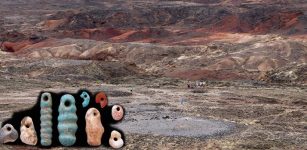 Surprising Discovery: Massive Cemetery Built 5,000 Years Ago Near Lake Turkana, Kenya
Archaeology | Aug 24, 2018
Surprising Discovery: Massive Cemetery Built 5,000 Years Ago Near Lake Turkana, Kenya
Archaeology | Aug 24, 2018 -
 New Insight On What Ancient Noses Smelled
Archaeology | Mar 29, 2023
New Insight On What Ancient Noses Smelled
Archaeology | Mar 29, 2023 -
 Ancient Site Tres Zapotes Offers Evidence The Olmecs Practiced Shared Governance
Archaeology | May 30, 2017
Ancient Site Tres Zapotes Offers Evidence The Olmecs Practiced Shared Governance
Archaeology | May 30, 2017 -
 Legendary Erlang Shen And His Third Seeing Eye That Could Distinguish Between Truth And Lie
Chinese Mythology | Aug 14, 2018
Legendary Erlang Shen And His Third Seeing Eye That Could Distinguish Between Truth And Lie
Chinese Mythology | Aug 14, 2018 -
 Neanderthals Had More Children And Lived In Smaller Groups Than Was Previously Thought
Archaeology | May 28, 2019
Neanderthals Had More Children And Lived In Smaller Groups Than Was Previously Thought
Archaeology | May 28, 2019 -
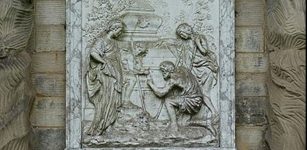 Shepherd’s Monument Mystery: Yet Another Undeciphered Inscription
Featured Stories | Jun 26, 2023
Shepherd’s Monument Mystery: Yet Another Undeciphered Inscription
Featured Stories | Jun 26, 2023 -
 Unexplained Phenomenon Around Yellowstone Puzzles Scientists
Featured Stories | Nov 12, 2018
Unexplained Phenomenon Around Yellowstone Puzzles Scientists
Featured Stories | Nov 12, 2018 -
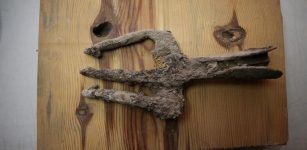 1700-Year-Old Iron Trident Found In The Ancient City Of Assos, Turkey
Archaeology | Nov 1, 2023
1700-Year-Old Iron Trident Found In The Ancient City Of Assos, Turkey
Archaeology | Nov 1, 2023 -
 Abu Dhabi Fossil Dunes May Have Inspired The Ancient Great Flood Story – Professor Says
Archaeology | Jul 10, 2022
Abu Dhabi Fossil Dunes May Have Inspired The Ancient Great Flood Story – Professor Says
Archaeology | Jul 10, 2022 -
 Earliest And Largest Scythian Princely Tomb Discovered In Siberia By Swiss Archaeologist
Archaeology | Jan 16, 2018
Earliest And Largest Scythian Princely Tomb Discovered In Siberia By Swiss Archaeologist
Archaeology | Jan 16, 2018 -
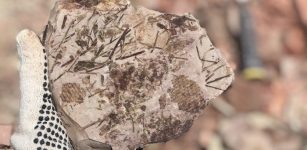 Long-Lost Paleontological Site With More Than 100 Unique Fossils Re-Discovered In Brazil
Archaeology | Jul 4, 2022
Long-Lost Paleontological Site With More Than 100 Unique Fossils Re-Discovered In Brazil
Archaeology | Jul 4, 2022 -
 Unexplained Encounters: Beings With Inhuman Eyes – A Darker Side Of Humanity Or Groundless Worries?
Featured Stories | Mar 2, 2025
Unexplained Encounters: Beings With Inhuman Eyes – A Darker Side Of Humanity Or Groundless Worries?
Featured Stories | Mar 2, 2025 -
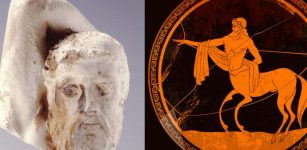 Why Is This Centaur Head A Scientific Mystery?
Archaeology | Jan 19, 2024
Why Is This Centaur Head A Scientific Mystery?
Archaeology | Jan 19, 2024 -
 Arachne – Spider Woman Who Challenged Goddess Athena And Was Punished
Featured Stories | Dec 5, 2018
Arachne – Spider Woman Who Challenged Goddess Athena And Was Punished
Featured Stories | Dec 5, 2018 -
 10 Remarkable Ancient Indian Sages Familiar With Advanced Technology And Science Long Before Modern Era
Featured Stories | Oct 19, 2015
10 Remarkable Ancient Indian Sages Familiar With Advanced Technology And Science Long Before Modern Era
Featured Stories | Oct 19, 2015



